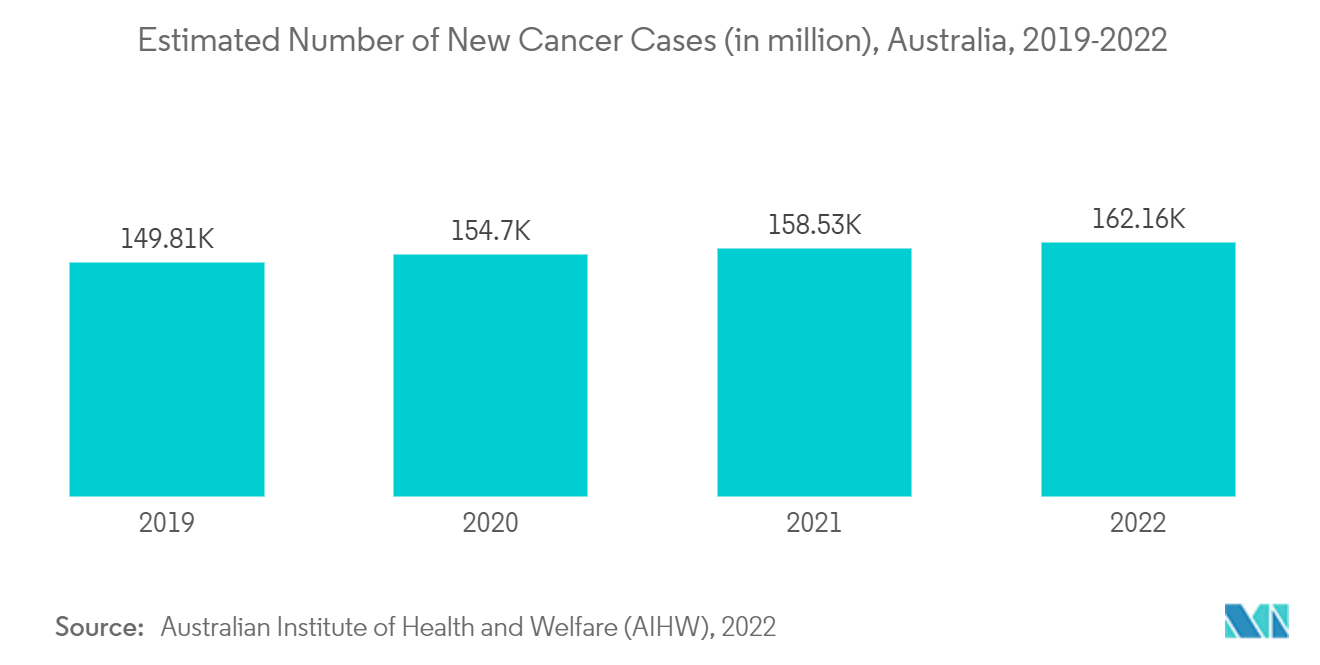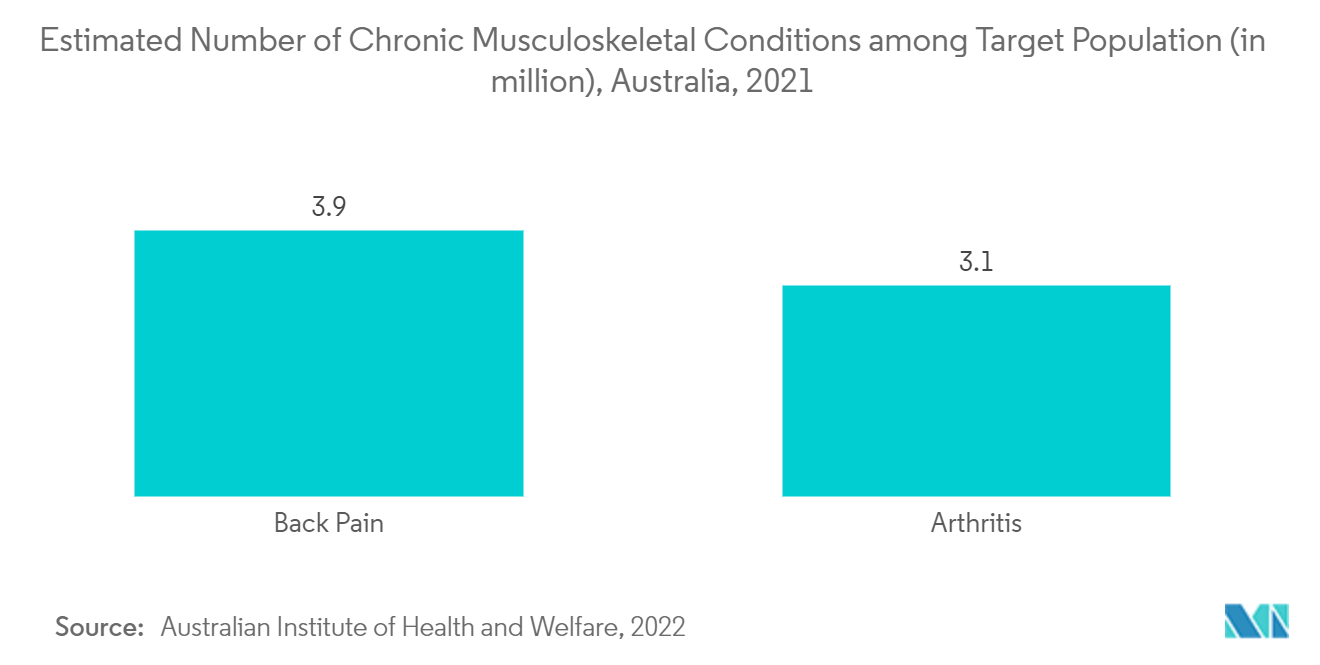Market Trends of Australia Minimally Invasive Surgery Devices Industry
This section covers the major market trends shaping the Australia Minimally Invasive Surgery Devices Market according to our research experts:
Endoscopic Devices Segment Expected to Grow Significantly
Endoscopic devices are minimally invasive and can be inserted into natural openings of the human body to observe an internal organ or a tissue in detail. The surgeries performed using endoscopic devices are generally imaging procedures and minor surgeries. Endoscopy can be indicated for various types of conditions, such as GIT disorders, pancreatitis, gastric/stomach cancer, respiratory tract disorders, urinary tract disorders, etc. Due to the clinical significance of endoscopic devices, these devices are gaining market demand and are expected to continue their growth at a faster rate over the next few years.
Endoscopic devices pose various advantages for the detection of various diseases. For instance, as per an article published in December 2021 in Cancers Journal, the detection and diagnosis of stomach lesions have improved due to the ongoing advancements in endoscopic technologies over time. Endoscopic technologies have been continuously advancing throughout the years to facilitate improvement in the detection and diagnosis of gastric lesions. Thus, owing to the burden of cancers in Australia, the demand for endoscopic devices is likely to rise, propelling the endoscopic devices market toward growth.
The market for an endoscope is expected to be driven by favorable reimbursement policies, technological advancements, and an increasing number of new players in the endoscopy devices market. As per the September 2022 update by KARL STORZ Endoscopy Australia Pty Ltd, the company manufactures best-in-class endoscopes in Sydney, Australia. In addition to the Sydney location, regional offices are also available in New South Wales, Victoria, Queensland, South Australia, and Western Australia to ensure a reliable infrastructure. Thus, the presence of such global and regional manufacturers that are focused on developing innovative endoscopes is anticipated to garner the segment's growth during the forecast period.

Orthopedic Segment Expected to Hold Significant Market Share
Minimally invasive surgery (MIS), also known as keyhole surgery, is carried out through several small incisions rather than a single large opening to achieve surgical results. With less stress to the nearby soft tissues, the MIS is performed. MIS offers to employ small, focused incisions to solely treat the problematic area during orthopedic surgery. Compared with traditional surgery, smaller incisions during MIS possess less danger, less pain, and quicker recovery for patients. Thus, the demand for MIS devices in orthopedic applications is increasing, driving the segment's growth.
Musculoskeletal conditions are becoming a burden for the Australian target population. Due to this, the demand for MIS surgeries is increasing in the country. For instance, as per data updated by AIHW in July 2022, chronic musculoskeletal conditions affect nearly 3 in 10 Australians. In addition, as per the Australian Bureau of Statistics 2020-21, nearly 6.9 (27% of all Australians) million people with chronic musculoskeletal conditions were self-reported, among which 3.9 million (16%) had back problems, 3.1 million (12%) had arthritis, and 889,000 (3.6%) had osteoporosis.
In addition, as per the data updated by The University of Adelaide in June 2022, arthritis affected nearly 17% of the population, and back disorders affected approximately 15% of the target population. Furthermore, 1 in 2 women and 1 in 4 men will be diagnosed with osteoporosis in their lifetime, with a high risk of fracture in Australia. This shows that the target population in Australia has a burden of musculoskeletal conditions that are further expected to create demand for MIS surgeries, accelerating the demand for the availability of MIS devices for orthopedic treatment. Therefore, the aforementioned factors are expected to drive the segment's growth over the forecast period.


